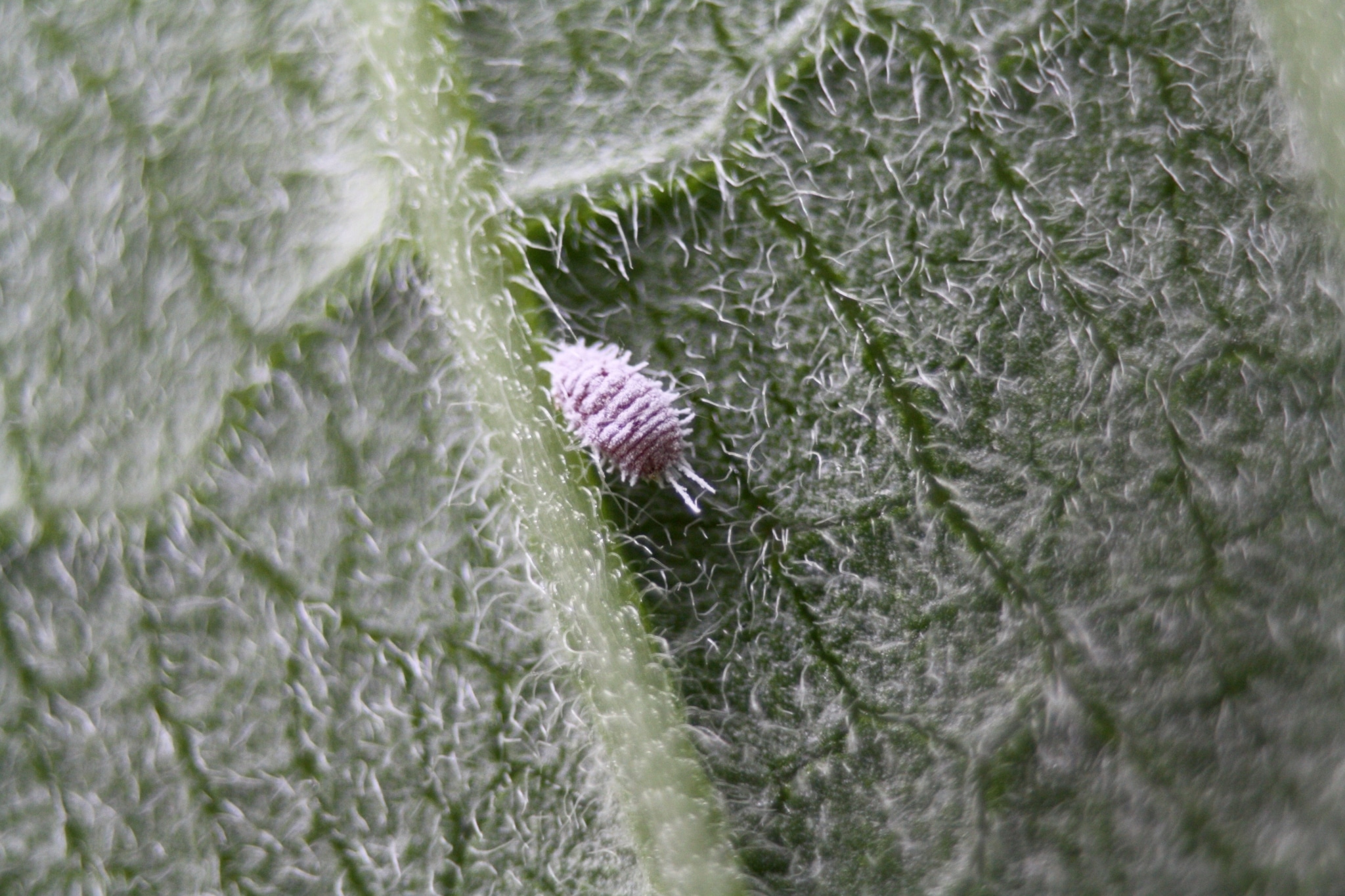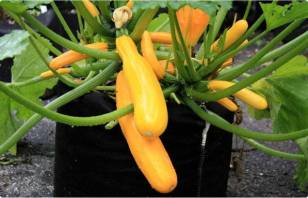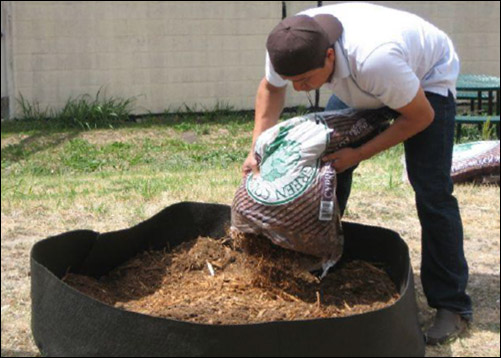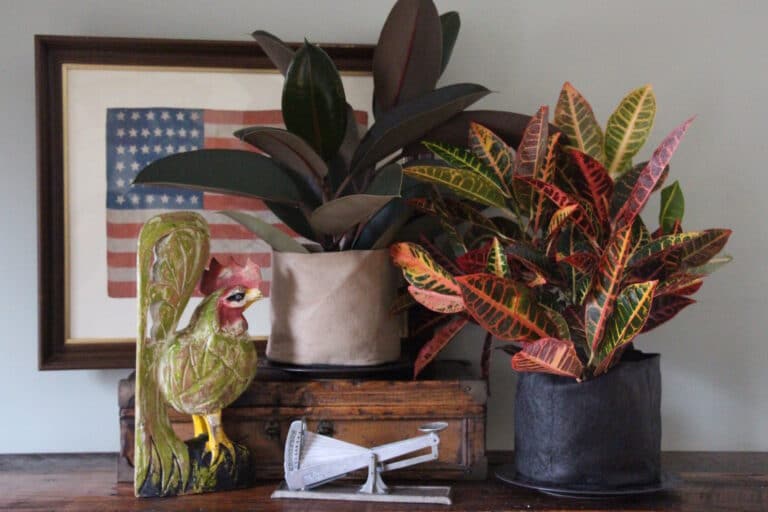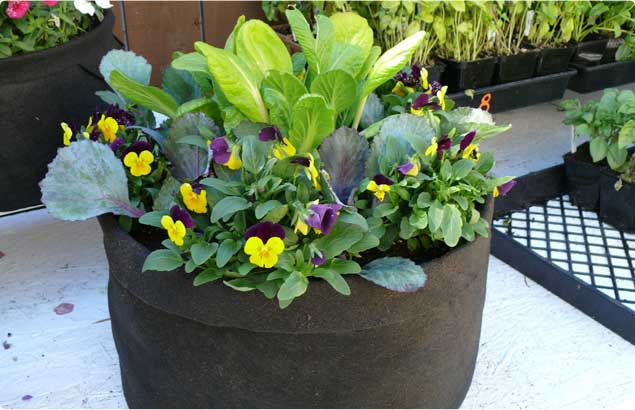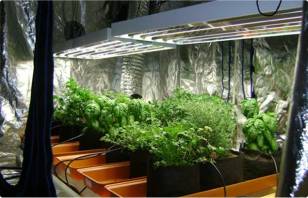Managing Indoor Plant Pests
From poor light conditions to improper watering, houseplant growers face many challenges. But for most of them, no problem raises greater concern than an encounter with indoor plant pests.
A house’s warm, consistent temperature – coupled with its complete lack of pest-munching natural enemies like ladybugs and lacewings – makes the perfect breeding ground for certain indoor pests.
While some houseplants are more pest-prone than others, at one time or another most houseplant lovers will find themselves battling one of the four common houseplant pests listed below. To tackle the problem head-on and bring those indoor plant pests under control, follow the control measures detailed for each of these harmful insect pests.
Aphids
Physical description: These small, teardrop-shaped insects are common indoor plant pests. They can be green, gray, brown, red, or yellow, depending on the species. Young aphids, called nymphs, look much like the 1/8- inch long adults only smaller. Adult aphids may or may not have wings.
Signs of damage:
Most often found clustered together on new growth or leaf undersides, aphids feed by sucking out the plant’s juices, causing stunted and deformed growth. As they feed, aphids excrete a sweet liquid called honeydew. The honeydew leaves behind a sticky residue, often found on the plant’s leaves, as well as on furniture and floors around the host plant
Control measures:
For small aphid infestations on indoor plants, wipe the insects off with a wet rag or paper towel. Larger infestations will require a few applications of insecticidal soap or horticultural oil. Both should be used with care and only according to label instructions. To prevent future aphid outbreaks, do not feed houseplants with nitrogen-rich fertilizers. These promote tender, succulent growth particularly attractive to aphids and other pests.
Scale
Physical description:
Scale insects are varied in appearance, but the most common species found on houseplants look like little bumps on leaf undersides and along stems. Scales often have armored plates surrounding them, and most are immobile and about 1/8 to 1/4 of an inch across. They can be brown, white, gray, or black.
Signs of damage:
The presence of sticky honeydew on leaves and other surfaces around the plant may indicate a scale infestation. Because this indoor plant pest feeds by sucking plant juices, the primary signs of damage include distorted growth and lack of vigor. If a scale infestation is suspected, carefully examine all areas of the plant for small raised bumps that may indicate scale. Crush one with your finger; you’ll know scale is to blame if you find a squishy texture beneath the crunchy outer shell.
Control measures:
Because of its protective shell, scale is difficult to control, even with indoor plant pesticide products such as insecticidal soap and horticultural oil. Early infestations are best handled by simply scraping the insects off with your fingers. The best control for heavier infestations is manual removal by soaking a cotton ball in isopropyl rubbing alcohol and physically wiping the insects off the plant. You’ll need to do this multiple times for the best control. In very difficult to control situations, move the infested plant outdoors and apply a neem-based pesticide, taking care to follow all label instructions carefully. Do not spray neem-based products indoors.
Spider mites
Physical description:
Spider mites aren’t insects but arachnids. Still, they’re a major indoor plant pest. These extremely small mites are rapid reproducers, so a few of them can turn into a large colony in no time at all. Though many species of spider mites exist, the two-spotted spider mite is a common houseplant pest.
Signs of damage:
Because these tiny critters spin fine, silky webbing, the presence of webbing on leaf undersides and growing points is often the first sign of spider mite issues. Both adult and immature spider mites feed by sucking plant juices, most often from the underside of leaves. Damage appears as dappled brown or yellow spots on the upper leaf surfaces.
Control measures:
Spider mites can be controlled by moving the plant outdoors and spraying all plant parts with a sharp stream of water from the hose. This dislodges most mites, but it must be done multiple times to ensure no mites are left behind to start a new colony. Severe infestations can be controlled with an indoor plant pesticide such as horticultural oil or insecticidal soap, though multiple weekly applications are often necessary.
Mealybugs
Physical description:
Mealybugs are soft-bodied insects that cover themselves with a white, waxy substance, causing them to look like small tufts of cotton. They’re often found in cracks and crevices of the plant, and tucked inside leaf nodes. Nymphs look like adults, only smaller.
Signs of damage:
Because mealybugs excrete honeydew, like aphids and scale the presence of a sticky coating on plant and furniture surfaces is often noted. They feed by sucking out plant sap and cause distorted growth.
Control measures:
Hand removal with an isopropyl rubbing alcohol-soaked cotton ball is the best bet for light infestations. This insect’s waxy covering makes it resistant to many indoor plant pesticides. For severe infestations, move the plant outdoors and apply a neem-based insecticide or insecticidal soap according to label instructions.
